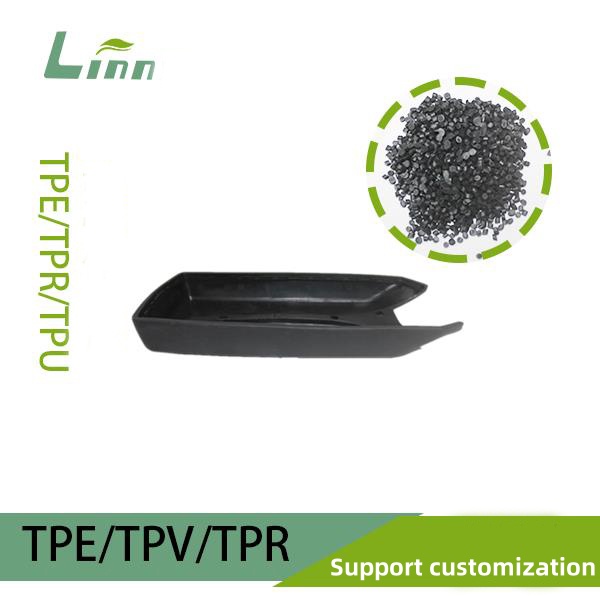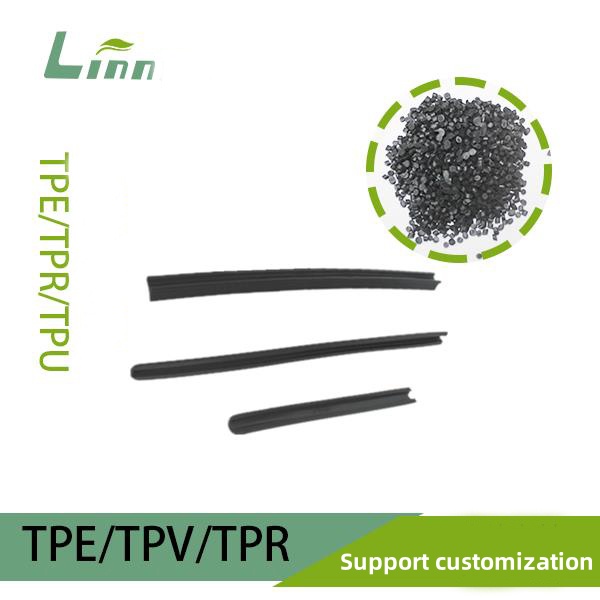As someone who has been deeply involved in the materials science and printing industries for years, I often get asked one question: Why does TPE (thermoplastic elastomer) have such poor adhesion to ink? This is a frustrating issue for many engineers and designers, especially when working on TPE products that require high-quality printing, such as soft-touch electronic device casings, medical equipment handles, or sports gear grips. TPE is a favorite in many industries due to its softness, durability, and eco-friendliness, but the ink adhesion problem is like a stubborn obstacle standing in the way of perfect applications.
In this article, I’ll dive into the reasons behind the poor adhesion of TPE to ink from perspectives like material properties, ink selection, and process conditions. I’ll also share practical solutions to help you navigate this challenge and achieve better results in your projects.

Why Does TPE Have Poor Ink Adhesion? Core Reasons Explained
TPE is a material that combines the elasticity of rubber with the processability of plastics, making it ideal for applications requiring flexibility and durability. However, its struggles with ink adhesion can be a real headache. Here are the main reasons I’ve identified:
1. Low Surface Energy and Poor Wettability
TPE’s molecular structure often includes non-polar segments, such as polyolefins or styrene-based components, resulting in low surface energy, typically between 30-35 dyn/cm. For ink to adhere well to a surface, good wettability is essential. In simple terms, low surface energy makes TPE act like a “greasy” surface, making it hard for ink to “grip” onto it.
Poor wettability manifests as ink shrinkage, uneven spreading, or even peeling. It’s similar to applying nail polish on oily nails—the polish just won’t stick properly.
2. Chemical Inertness of TPE
TPE’s chemical structure is relatively stable, especially in high-performance variants like TPU or SEBS-based TPEs, which lack reactive functional groups on their surfaces. This means that the solvents or binders in ink struggle to form chemical bonds with the TPE surface. In contrast, engineering plastics like ABS or PC have surfaces that more readily form chemical bonds with ink, resulting in better adhesion.
3. Compatibility Issues Between Ink and TPE
Ink formulations vary widely, including solvent-based, UV-curable, and water-based inks. Each type has different chemical compositions and curing mechanisms, and TPE can be surprisingly “picky” about inks. For example, volatile components in some solvent-based inks may erode the TPE surface, further reducing adhesion, while UV inks, despite curing quickly, often lack sufficient adhesion to TPE.
4. Impact of Manufacturing Processes
The details of the printing process can significantly affect adhesion. Factors like pre-print surface preparation, curing temperature, and environmental humidity can make or break the outcome. I’ve seen cases where high workshop humidity or inadequate surface cleaning led to drastic reductions in ink adhesion.
5. Additives in TPE Formulations
During TPE production, manufacturers often add various additives, such as plasticizers, lubricants, or anti-aging agents. These additives can form a microscopic “barrier layer” on the TPE surface, hindering ink adhesion. Low-cost TPEs, in particular, may contain excessive fillers to cut costs, further degrading surface performance.

How to Improve TPE-Ink Adhesion? Practical Solutions
Now that we’ve identified the reasons behind poor TPE-ink adhesion, let’s focus on solutions. Below are some effective methods I’ve gathered from years of hands-on experience:
1. Surface Pretreatment: Activating the TPE Surface
Surface pretreatment is the first and most critical step in improving TPE-ink adhesion. Here are some common methods:
Plasma Treatment: Low-temperature plasma bombardment introduces polar functional groups (e.g., hydroxyl or carboxyl groups) to the TPE surface, significantly increasing surface energy. According to a study on ScienceDirect, plasma treatment can raise TPE surface energy from 30 dyn/cm to over 50 dyn/cm, greatly improving ink adhesion.
Flame Treatment: High-temperature flames briefly treat the TPE surface, increasing roughness and reactivity. This method is ideal for large-scale production but requires precise control of flame temperature to avoid damaging the material.
Chemical Priming: Applying a specialized primer to the TPE surface enhances ink adhesion. Primers typically contain components compatible with both TPE and ink, acting as a “bridge.”
Mechanical Sanding: Lightly sanding the TPE surface increases roughness, improving physical ink adhesion. However, excessive sanding may compromise the material’s aesthetics.
2. Choosing the Right Ink
Ink selection is critical to printing success. For TPE, I recommend the following ink types:
|
Ink Type |
Features |
Applications |
Considerations |
|---|---|---|---|
|
Solvent-Based Ink |
Strong adhesion, moderate drying speed |
Small batches, complex patterns |
Solvents may erode TPE, test compatibility |
|
UV Ink |
Fast curing, good abrasion resistance |
High-speed production |
Requires UV curing equipment, higher cost |
|
Silicone Ink |
Excellent compatibility with TPE, flexible |
Soft TPE products |
Higher cost, requires professional formulation |
When selecting ink, consult with suppliers to obtain TPE-specific formulations and conduct small-scale tests to ensure compatibility.
3. Optimizing the Printing Process
Every detail of the printing process can impact the final result. Here are some key optimization tips:
Control Environmental Conditions: Maintain workshop temperatures at 20-25°C and humidity at 40-60% to prevent ink issues due to environmental factors.
Clean the Surface: Before printing, wipe the TPE surface with isopropyl alcohol or a neutral cleaner to remove grease, dust, or additive residues.
Adjust Curing Parameters: For UV inks, ensure sufficient UV lamp power and exposure time; for solvent-based inks, extend drying time to avoid residual solvents affecting adhesion.
Multi-Layer Printing: For complex patterns, use layered printing—apply a base color first, then add details to enhance overall adhesion.
4. Collaborate with TPE Suppliers to Optimize Formulations
If you can communicate directly with your TPE supplier, consider these suggestions:
Reduce the use of surface-migrating additives, such as certain plasticizers or lubricants.
Opt for TPE grades with higher surface energy, as TPU-based TPEs are generally easier to print on than SEBS-based ones.
Request custom TPE formulations with increased polar functional groups on the surface to improve chemical compatibility with ink.

5. Testing and Validation
No matter which method you use, testing is essential. Here are some common tests to ensure ink adhesion meets standards:
Cross-Hatch Test: Cut a grid pattern on the printed surface, apply adhesive tape, and check for ink detachment.
Abrasion Test: Use a standard abrasion tester to simulate long-term use and evaluate ink durability.
Immersion Test: Soak the printed part in water or alcohol to check for ink detachment, ideal for medical or outdoor applications.
Real-World Case Study: From Failure to Success
A few years ago, I worked on a project involving printing a high-precision brand logo on TPE handles. The client demanded vibrant, durable printing. Initially, we used a standard solvent-based ink, but within a week, the logo began peeling, leaving the client deeply dissatisfied.
After extensive testing, we pinpointed the issues: lubricant residues on the TPE surface and poor ink compatibility. Our final solution involved plasma-treating the TPE surface, applying a specialized primer, and switching to a silicone-based ink formulated for TPE. The revised printing process delivered outstanding results—the logo was not only firmly adhered but also passed the client’s rigorous abrasion tests.
This experience taught me that solving TPE-ink adhesion issues requires a tailored approach. No single method works for every scenario. Patience, testing, and optimization are the keys to success.
Frequently Asked Questions
To provide a more comprehensive understanding of TPE-ink adhesion issues, I’ve compiled some common questions and answers:
Q1: Do all TPEs have poor ink adhesion?
A: Not all TPEs are difficult to print on. Different TPE types (e.g., TPU, SEBS, TPO) have varying surface properties. TPU is generally easier to print on than SEBS. Consult with your supplier to select TPE grades optimized for printing.
Q2: Does surface pretreatment increase production costs?
A: Yes, methods like plasma treatment or primers add some costs. However, stable printing quality reduces rework and customer complaints, potentially lowering overall costs. Optimize processes, such as localized treatment or automated equipment, to manage expenses.
Q3: Are UV inks suitable for all TPEs?
A: UV inks cure quickly and are great for high-speed production, but they’re not universally compatible with TPEs. Low-surface-energy TPEs may require primers or surface treatments. Always conduct sample tests to confirm performance.
Q4: How can I tell if an ink is compatible with TPE?
A: The most reliable method is adhesion testing, such as cross-hatch or abrasion tests. Additionally, consult your ink supplier, provide the TPE’s specific grade and application details, and request recommended formulations.
Q5: Can peeling ink be repaired after printing?
A: For small areas, you can apply a primer and touch up with ink. For large-scale peeling, it’s better to retreat the TPE surface and reprint. Prevention is more effective than repair, so ensure thorough preparation before printing.
Final Thoughts
The issue of poor TPE-ink adhesion may seem daunting, but by focusing on low surface energy, chemical inertness, and process details, you can find effective solutions. As a practitioner, I know that every printing project carries the hopes of designers and engineers and may impact a product’s market success. I hope this article provides you with practical insights and methods to tackle TPE printing challenges with confidence.
If you have further questions or specific cases to discuss, feel free to reach out. I’m happy to help analyze your situation and find the best approach. After all, in the world of materials and printing, every challenge is an opportunity to grow!





